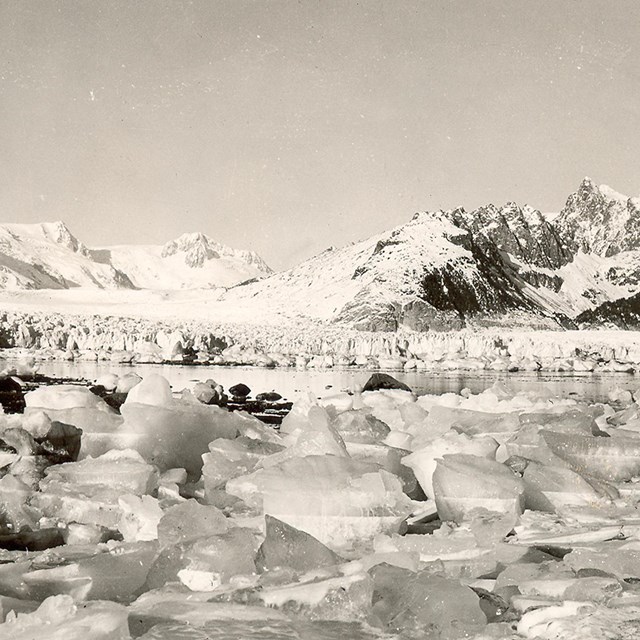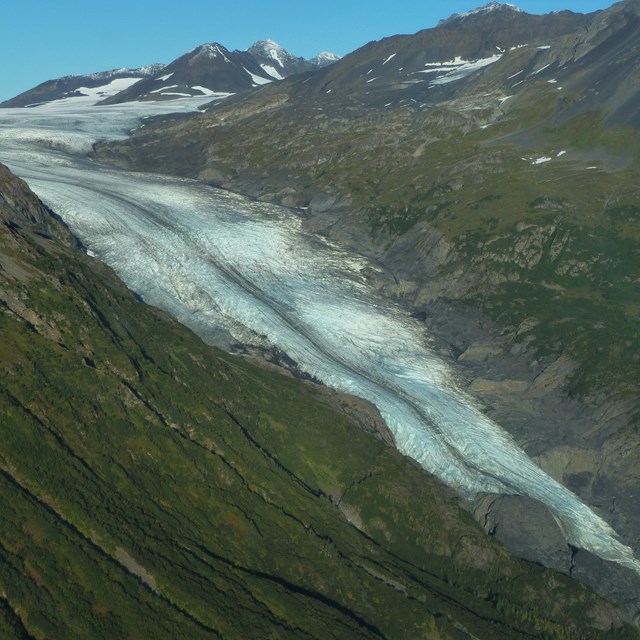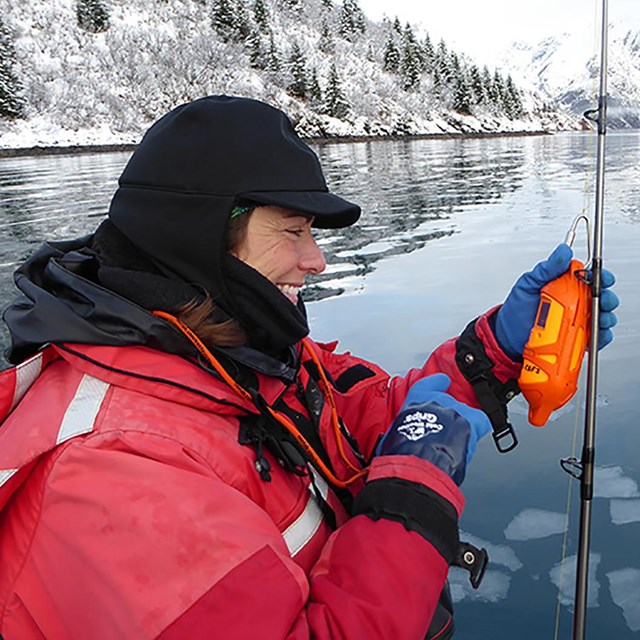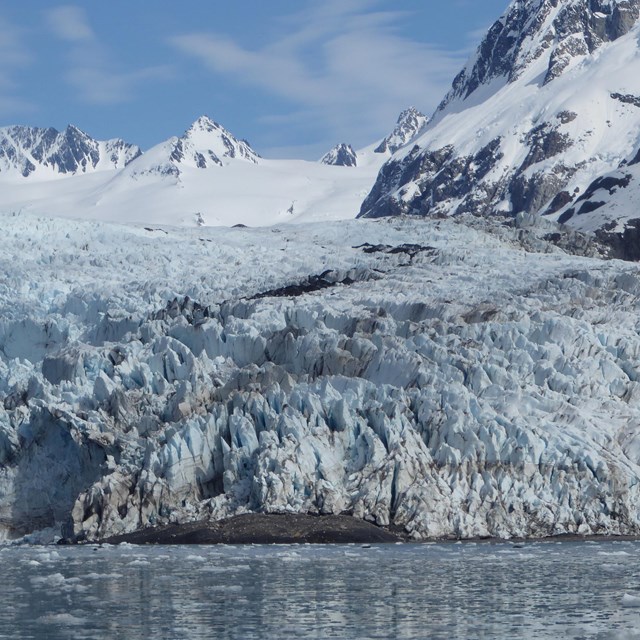
NPS Photo/ D Kurtz Approximately one quarter (4.6 million acres) of Alaska's glaciers exist within national parks. Kenai Fjords National Park is a land dominated by glaciers, massive rivers of ice that flow out from the Harding Icefield. Today, nearly 51 percent of the park is covered by ice. All of this land was once buried beneath the ice and still bears its influence, in both the physical forms, and the everyday glacial terminology used at the park. The dramatic coastal fjords and valleys of the park reveal a long history of glaciation.
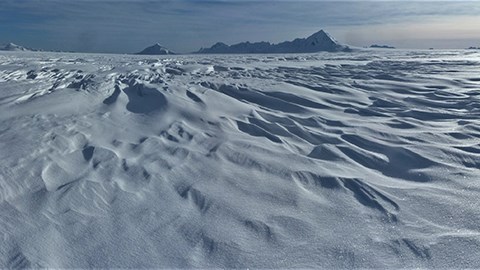
NPS photo/ D. Kurtz The Making of a GlacierThe formation of a glacier requires three conditions: abundant snowfall, cool summers, and the gravitational flow of ice. All of these conditions are met in Kenai Fjords. Moist air moving off the Gulf of Alaska in the winter drops, on average, 60 feet of snowfall on the Harding Icefield every year. These prevailing weather systems from the Gulf also ensure cool (and wet) summers in which much of the winter snow does not melt. As the snow accumulates, the weight of overlying layers causes the snowflakes to degrade and compact. This process, called firnification, is the first step in the transition from airy snow into dense glacial ice. A first year snowfall is approximately 80 percent air. As snow degrades and compacts it passes through stages defined by density: first year snow becomes 'névé', this changes to 'firn' (which is 20 - 30% air) and after several years to 'glacial ice.' In Kenai Fjords, the entire process takes about 4-10 years.Slip Sliding AwayDense and heavy glacier ice begins to flow downhill. Extremely thick glaciers, which form in areas of especially high snowfall, tend to flow faster than thinner glaciers, as their greater mass is more affected by gravity. Similarly, glaciers with steeper gradients flow faster than glaciers spread across gentler slopes.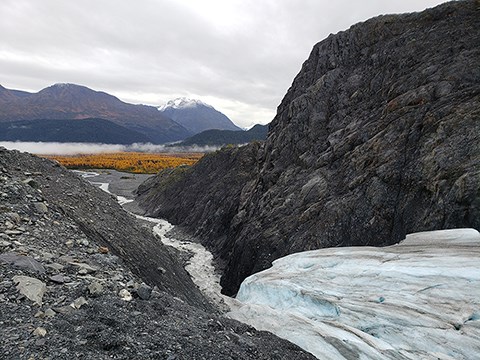
NPS photo/ D. Kurtz There are three main types of glacial movement: basal slippage, pressure melting, and plastic deformation. Basal slippage occurs when the ice slides or slips over the underlying bedrock. This process is facilitated by meltwater flowing at the base of the glacier which reduces friction between the ice and the bedrock. In temperate regions where there is high melting, such as Kenai Fjords, basal slippage can account for up to 90 percent of overall movement. Because meltwater plays such an important role in basal slippage, glaciers flow faster in summer than winter. From the Edge of Glacier Trail at Exit Glacier, you can hear the meltwater rushing beneath the ice and eventually gushing out across the outwash plain. All that the Glacier Leaves BehindThe erosional and depositional features created by the ice are an important part of the glacial process in the park. Like flowing water, flowing ice has a tremendous ability to reshape the landscape. As the ice erodes the terrain, it creates new landscapes and yields a tremendous amount of sediment and debris.Where glaciers flow downhill, the tremendous weight of the ice pushing down on the underlying bedrock causes a great deal of erosion. Over time, glaciers can wear away even the strongest rocks, leaving behind a variety of features. The most prevalent erosional feature in Kenai Fjords is the steep-sided, flat-bottomed U-shaped valley. This classic shape is evident on the drive to Exit Glacier. 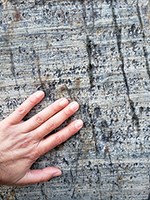
NPS Photo/ D. Kurtz 
NPS photo/ D. Kurtz 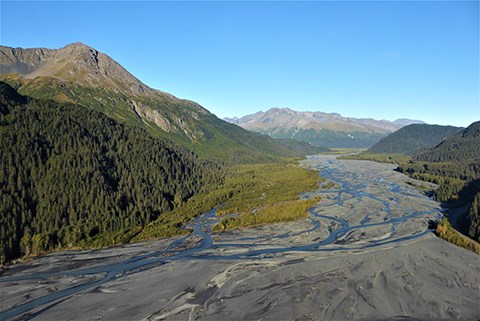
NPS photo/ D. Kurtz A Story in the LandscapeFrom tiny striations only millimeters wide to stunning fjords thousands of feet deep, the land of Kenai Fjords National Park tells a story of ice that has taken thousands of years to write. Today the national park exists to preserve the story written in the landscape and to protect the coming chapters. Here in Kenai Fjords, we are monitoring the glaciers of the Harding Icefield to document, measure, and understand their response to a changing climate. |
Last updated: March 25, 2024

